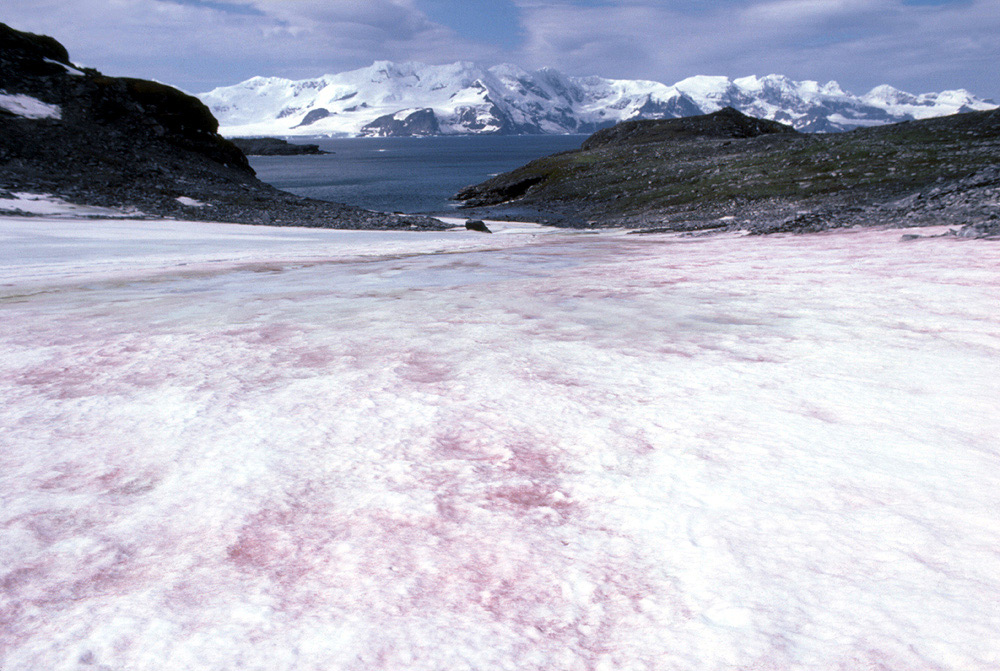Raspberry Ripple Snow
OK not an iceberg at all, but part of a land-based snow slope. In the spring when the winters snow begins to melt, water flows across the top of glaciers and snow slopes carrying with it dissolved nutrients in the melt water. In these conditions, algae grows within the top layer of the ice or snow catching the goodies as they flow by and taking advantage of the extra energy from the longer days and stronger sunshine.
In this case the algae is predominantly a red-coloured species, but further down the slope, green and blue-green colours are discernable. This is relatively short-lived spring phenomena as soon the very snow and ice layer that the algae are living in will melt and the algae will flow down to the sea with the water that provides them with their nourishment. It is not unusual to see distinctly red, green or blue-green topped ice bergs in the spring as a result of the growth of such algae.
There are over 300 species of such algae that live in such harsh and cold conditions. The red colour is a protective chemical (carotenoids such as astaxanthin) that the alga produces against exceptionally high concentrations of visible and ultra violet light that bounces off the snow and ice surfaces and so saturates them to a point where it become harmful and destructive. Such algae are also found in other parts of the world, often in high mountains where extra u-v light due to the thinner atmosphere and again increased light scattering by ice and snow requires protection by similar pigments.
Sometimes, walking across such an area will leave behind red footprints as the algae are concentrated by the walker as the snow is crushed, and sometimes there will be a a faint smell of fresh watermelon accompanying the phenomena.
Previous
Next
Back to thumbnails
Photo credit - Paul Ward / coolantarctica.com

